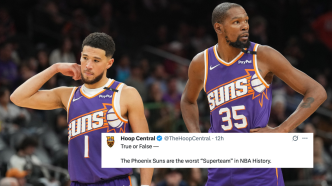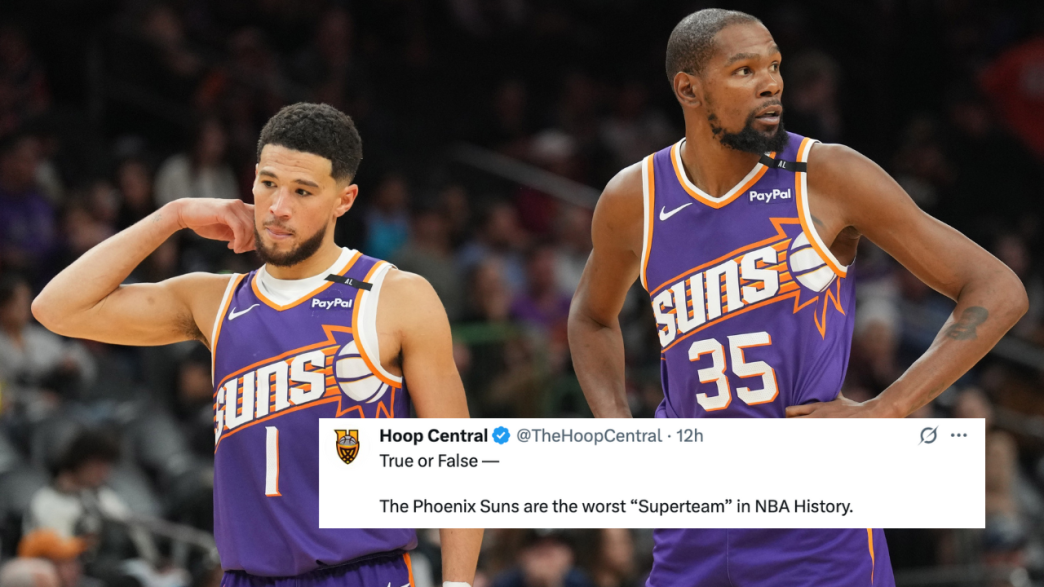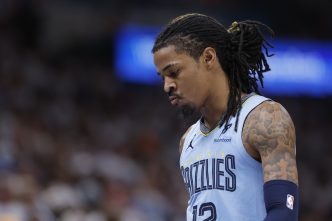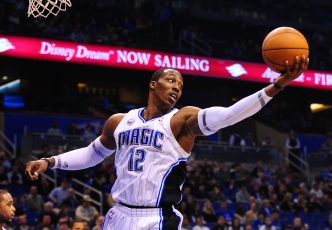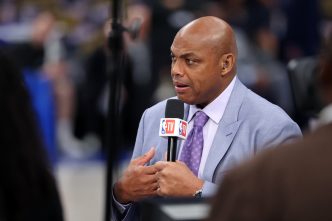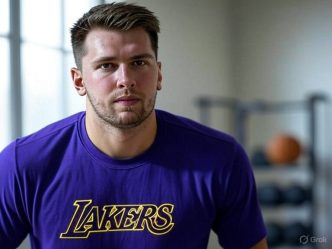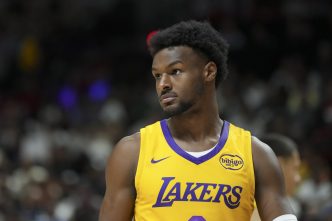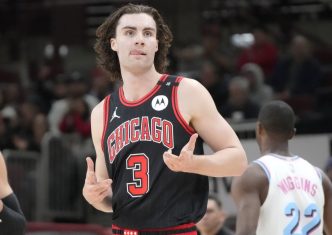The Phoenix Suns’ journey to “superteam” status began in 2021 when they acquired Chris Paul to pair with their young star, Devin Booker. The move paid immediate dividends, as the Suns reached the NBA Finals that year, falling just short against the Milwaukee Bucks. However, the real “superteam” narrative took shape in 2023 when the Suns made a blockbuster trade to bring in Kevin Durant, one of the league’s most lethal scorers, to join Booker and Paul. Later, in the 2023 offseason, they added Bradley Beal, another All-Star caliber player, creating a big three (and briefly a big four with Deandre Ayton before his departure) that had fans dreaming of a championship.
On paper, the trio of Durant, Booker, and Beal was a powerhouse. Durant, a former MVP and two-time champion, brought elite scoring and playoff experience. Booker, a rising superstar, had already proven himself as a clutch performer. Beal, a prolific scorer in his own right, added another dimension to the Suns’ offense. The expectation was clear: this team was built to win a title, and anything less would be a failure.
The Struggles of the Suns
Despite the star power, the Suns have failed to live up to the “superteam” hype. Injuries have been a persistent issue, with Durant, Booker, and Beal rarely sharing the court together for extended stretches. In the 2023-2024 season, the trio played only 41 games together, hampering the team’s ability to build chemistry. When they did play, the results were inconsistent. The Suns finished the regular season with a 49-33 record, good for the sixth seed in the Western Conference, but they were swept in the first round of the playoffs by the Minnesota Timberwolves—a humbling defeat for a team with such high expectations.
The lack of depth has also been a glaring issue. Trading away key role players like Mikal Bridges, Cam Johnson, and multiple draft picks to acquire Durant left the Suns with a thin bench. While their stars could put up points, the team struggled defensively and lacked the supporting cast needed to compete with more balanced teams. Additionally, the fit between the three stars has been questioned. All three are ball-dominant players who thrive with the ball in their hands, leading to a sometimes clunky offensive system that lacks fluidity.
Comparing the Suns to Other “Superteams”
To determine if the Suns are truly the worst “superteam” in NBA history, we need to define what a superteam is and look at historical examples. A superteam typically refers to a team that assembles multiple All-Star or superstar players, often through trades or free agency, with the explicit goal of winning a championship. Some notable superteams include:
- The 2007-2008 Boston Celtics: Kevin Garnett, Paul Pierce, and Ray Allen joined forces and won a championship in their first season together, finishing with a 66-16 record.
- The 2010-2014 Miami Heat: LeBron James, Dwyane Wade, and Chris Bosh formed a powerhouse that reached four straight Finals, winning two titles.
- The 2016-2019 Golden State Warriors: After adding Kevin Durant to a core of Stephen Curry, Klay Thompson, and Draymond Green, the Warriors won two more titles in three years.
- The 2012-2013 Los Angeles Lakers: This team, featuring Kobe Bryant, Dwight Howard, Steve Nash, and Pau Gasol, is often cited as a failed superteam. Despite the talent, injuries and poor chemistry led to a first-round playoff exit.
The 2012-2013 Lakers provide the closest comparison to the Suns. Like the Suns, the Lakers had a roster of big names but struggled with injuries and fit. Nash and Howard were often sidelined, and the team never gelled, finishing with a 45-37 record before being swept by the San Antonio Spurs in the playoffs. However, the Lakers’ failure was somewhat mitigated by the fact that Kobe Bryant suffered a season-ending Achilles injury late in the year, derailing their season. The Suns, on the other hand, have had their stars available for significant portions of the season but still couldn’t advance past the first round.
Another example of a disappointing superteam is the 2019-2020 Los Angeles Clippers, who paired Kawhi Leonard with Paul George. Despite high expectations, the Clippers blew a 3-1 lead to the Denver Nuggets in the second round of the playoffs. However, the Clippers at least made it to the second round, a feat the Suns couldn’t accomplish in 2024.
Why the Suns Might Be the Worst
The Suns’ case for being the worst superteam in NBA history is bolstered by their lack of playoff success. Most superteams, even the ones that ultimately failed, at least made deep playoff runs or won a championship. The Suns, despite having three players who are arguably in their prime (or close to it, in Durant’s case), couldn’t even win a single playoff game in 2024. Their first-round sweep was particularly embarrassing given the talent on the roster and the relatively favorable matchup against a young Timberwolves team.
Additionally, the Suns’ lack of depth and poor roster construction have been more pronounced than other failed superteams. The 2012-2013 Lakers, for example, still had some solid role players like Metta World Peace and Antawn Jamison, even if they were past their primes. The Suns, by contrast, have relied heavily on minimum-salary players to fill out their roster, leaving them vulnerable when their stars aren’t performing at an elite level.
Counterarguments: Is the Label Fair?
On the other hand, calling the Suns the worst superteam in NBA history might be premature. The 2023-2024 season was the first full year with Durant, Booker, and Beal together, and injuries played a significant role in their struggles. Superteams often take time to gel—look at the 2010-2011 Miami Heat, who started 9-8 before figuring things out and reaching the Finals. The Suns could still turn things around in the 2024-2025 season, especially if they stay healthy and make some roster adjustments.
Moreover, the “superteam” label might be a bit of a stretch for the Suns. While Durant, Booker, and Beal are all stars, none of them are currently considered top-five players in the league. Compare that to the Warriors’ superteam, which had two MVPs (Curry and Durant) in their primes, or the Heat, who had LeBron James at the peak of his powers. The Suns’ trio, while talented, doesn’t quite match the star power of those teams, which might lower the expectations for what they should have achieved.
Conclusion
The Phoenix Suns’ “superteam” experiment has undoubtedly been a disappointment so far. Their lack of playoff success, combined with poor roster construction and injury woes, makes them a strong candidate for one of the most underwhelming superteams in NBA history. However, labeling them the absolute worst might be a step too far. Teams like the 2012-2013 Lakers and 2019-2020 Clippers also failed to meet expectations, and the Suns still have time to change the narrative.

